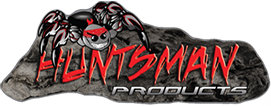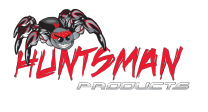
Position the trailer on a stable and LEVEL working surface. If possible, leave the tow vehicle hooked to the trailer in order to limit movement as well as keeping the front end supported and level. If the trailer is not supported on the tow vehicle, it MUST be blocked directly to the ground at the frame/tongue junction.
UNDER NO CIRCUMSTANCES IS THE TRAILER TO BE SUPPORTED BY THE TONGUE JACK WHILE BEING
RAISED AT THE WHEELS!
Block the wheels opposite the side being worked on both front and rear so that the trailer cannot roll.
NOTE: Using an adequate capacity floor or scissors jack, raise the side of the trailer. NOTE: Check under frames for brake wires BEFORE lifting. DO NOT position jack in areas that may damage brake wires, etc.
NOTE: A. Tandem and tri-axle trailers should be jacked on the frame between the wheels, or directly under the axle within 8” of the backside of the tire. B. Single axle trailers can be lifted on the frame just behind the axle or directly under the axle within 8” of the backside of the tire (if lifting at the axle).
CAUTION- always support the trailer with adequate capacity support stands. DO NOT rely on the jack as the
only means of support.
1. Check Brake Mounting Flange
To mount brakes to an axle, the axle must have brake flange welded to the axle. Tie Down’s 10” drum brakes fit standard 4 hole brake flanges and mount with 7/16” grade 5 or better bolts and lock nuts or lock washers. Our 12” drum brakes fit standard 5 hole brake flanges and mount with 3/8” grade 5 or better bolts and lock nuts or lock washers. The brake flange connected to the axle must be square and concentric with the axle spindle. If the brake flange is not properly installed, it will contribute to rapid lining wear and improper brake action. If your axle does not have flanges pre-welded to the axle, see a qualified technician to weld the plates to your axles. Improper welding can weaken the axle causing severe problems.
2. Brakes Installation Brakes are marked as "RIGHT" (RH) and "LEFT" (LH). The "LEFT" brake travels on the passenger's side of the trailer. Place the brake against brake flange with the adjustor wheel at the bottom. Secure with four 7/16” (grade 5) hex head bolts for the 10” brakes or five 3/8” (grade 5) hex head bolts for the 12” brakes. Use lock washers or lock nuts w/flat washers on the back side of the flange. Torque to 30 ft. lbs.
3. Installing Brake Drum
After the brakes have been correctly assembled to the brake flanges, TAKE NOTE which direction the spoon needs to be moved in order to open the star wheel, mount the brake drum to the spindle. If re-using drum and bearings, check for wear or pitting in the bearings and cup surfaces. Check drum for surface ware. Replace any parts that show wear. Pack the inside bearing with suitable wheel bearing grease. Force grease through and around the rollers. Place the bearing in the hub and install the grease seal flush with the end of the hub using an arbor press or soft mallet. The bearing seal should be lubricated before putting it on the brake drum. Remove excess grease.
Lubricate and install the outer bearing on spindle. Place thurst washer and new locking tab washer if applicable) and castle nut on spindle. Turn the brake drum as you the tighten spindle nut. When a pronounced drag is felt in the bearings, back off the spindle nut one complete slot and install cotter pin or bend tab on locking tooth washer (if aplicable) and dust cap. Caution: Do not over pack hub with grease. Excessive grease may leak into brake drums causing brake failure. Install wheels at this time. Tighten wheel nuts to proper torque as recommended by trailer or wheel manufacturer. Recheck lug torque after first 50 miles. Spin wheel at this time to make sure the wheel rotates freely without wobble or drag.
4. Initial Adjustment of Brakes
Adjust the brakes before removing the jacks.
A. With trailer wheel off the ground and tire mounted. Remove the rubber access hole plugs from the rear of the brake backing plate.
B. Inserting a brake spoon or flat screwdriver through the access hole(s), tighten the star adjuster while rotating the wheel in the forward direction. NOTE: Always spin wheel in the forward direction as if the trailer was traveling forward on the road. Tighten the star adjuster until the wheel reaches a point where the brake shoes start to engage.
C. Loosen the star adjustor one click at a time while turning the wheel in a forward rotation. Continue adjusting one click at a time until the wheel rotates with little effort.
D. Replace the rubber access hole plugs.
E. Repeat this procedure for all braking wheels.

5. Connect Elecrical Wires
Electric brake controllers are required to be used with electric brakes. Follow the manufacturers installation and use instructions for setting up the brake controller with your tow vehicle and trailer.
Connect wiring separately to each brake. Magnet wires are not set up as “+” or “-”. Electric Brakes are similar to drum brakes on an automobile; the difference is that instead of hydraulic pressure actuating the brakes, an electromagnet activates the brakes. When power is given to the magnets, they are attracted to the inside of the brake drum. The drag on the magnet moves the actuating arm and the brake shoes are forced out to the inside of the brake drum hub.
NOTE: When using drum or disc brakes on tandem axle trailers, both axles must be installed with brakes, Failure to install brakes on both axles will result in loss of braking performance, overheating of brakes & wheel hub, and significantly reduce brake pad life.


